 W
WSilq is a new high-level programming language for quantum computing with a strong static type system, developed at ETH Zürich.
 W
WAncilla bits are some extra bits being used to achieve some specific goals in computation. In classical computation, any memory bit can be turned on or off at will, requiring no prior knowledge or extra gadgetry. However, this is not the case in quantum computing or classical reversible computing. In these models of computing, all operations on computer memory must be reversible, and toggling a bit on or off would lose the information about the initial value of that bit. For this reason, in a quantum algorithm there is no way to deterministically put bits in a specific prescribed state unless one is given access to bits whose original state is known in advance. Such bits, whose values are known a priori, are known as ancilla bits in a quantum or reversible computing task.
 W
WAQUA@home was a distributed computing project operated by D-Wave Systems and running on the Berkeley Open Infrastructure for Network Computing (BOINC) software platform. It closed down in August 2011. Its goal was to predict the performance of superconducting adiabatic quantum computers on a variety of problems arising in fields ranging from materials science to machine learning. It designed and analyzed quantum computing algorithms, using Quantum Monte Carlo techniques.
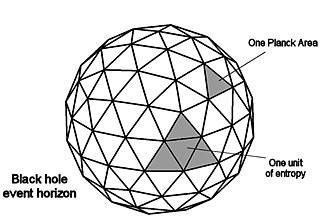 W
WIn physics, the Bekenstein bound is an upper limit on the entropy S, or information I, that can be contained within a given finite region of space which has a finite amount of energy—or conversely, the maximal amount of information required to perfectly describe a given physical system down to the quantum level. It implies that the information of a physical system, or the information necessary to perfectly describe that system, must be finite if the region of space and the energy is finite. In computer science, this implies that there is a maximal information-processing rate for a physical system that has a finite size and energy, and that a Turing machine with finite physical dimensions and unbounded memory is not physically possible.
 W
WIn computer science, the controlled NOT gate is a quantum logic gate that is an essential component in the construction of a gate-based quantum computer. It can be used to entangle and disentangle EPR states. Any quantum circuit can be simulated to an arbitrary degree of accuracy using a combination of CNOT gates and single qubit rotations.
 W
WCambridge Quantum Computing (CQC) is an independent quantum computing company, based in Cambridge, England. Founded in 2014, CQC builds tools for the commercialization of quantum technologies with a focus on quantum software and quantum cybersecurity. CQC has developed a platform agnostic quantum compiler, tket⟩, around which the company has built enterprise applications for quantum chemistry, quantum machine learning, quantum cryptography and quantum finance.
 W
WThe Centre for Nanoscience and Quantum Information is a research centre within the University of Bristol. The centre was initially built as an intra-university facility, but was absorbed into the portfolio of the School of Physics in 2016. The centre officially opened in 2009, the Centre was designed to provide a unique ultra-low-vibration research space, making the labs some of the quietest in the world.
 W
WIn quantum computing, a charge qubit is a qubit whose basis states are charge states. In superconducting quantum computing, a charge qubit is formed by a tiny superconducting island coupled by a Josephson junction to a superconducting reservoir. The state of the qubit is determined by the number of Cooper pairs which have tunneled across the junction. In contrast with the charge state of an atomic or molecular ion, the charge states of such an "island" involve a macroscopic number of conduction electrons of the island. The quantum superposition of charge states can be achieved by tuning the gate voltage U that controls the chemical potential of the island. The charge qubit is typically read-out by electrostatically coupling the island to an extremely sensitive electrometer such as the radio-frequency single-electron transistor.
 W
WIn computer science, the controlled NOT gate is a quantum logic gate that is an essential component in the construction of a gate-based quantum computer. It can be used to entangle and disentangle EPR states. Any quantum circuit can be simulated to an arbitrary degree of accuracy using a combination of CNOT gates and single qubit rotations.
 W
WD-Wave Systems, Inc. is a Canadian quantum computing company, based in Burnaby, British Columbia, Canada. D-Wave was the world's first company to sell computers to exploit quantum effects in their operation. D-Wave's early customers include Lockheed Martin, University of Southern California, Google/NASA and Los Alamos National Lab.
 W
WIn physics, dephasing is a mechanism that recovers classical behaviour from a quantum system. It refers to the ways in which coherence caused by perturbation decays over time, and the system returns to the state before perturbation. It is an important effect in molecular and atomic spectroscopy, and in the condensed matter physics of mesoscopic devices.
 W
WIn quantum computing, more specifically in superconducting quantum computing, flux qubits are micrometer sized loops of superconducting metal that is interrupted by a number of Josephson junctions. These devices function as quantum bits. The flux qubit was first proposed by Terry P. Orlando et al. at MIT in 1999 and fabricated shortly thereafter. During fabrication, the Josephson junction parameters are engineered so that a persistent current will flow continuously when an external magnetic flux is applied. Only an integer number of flux quanta are allowed to penetrate the superconducting ring, resulting in clockwise or counter-clockwise mesoscopic supercurrents in the loop to compensate a non-integer external flux bias. When the applied flux through the loop area is close to a half integer number of flux quanta, the two lowest energy eigenstates of the loop will be a quantum superposition of the clockwise and counter-clockwise currents.The two lowest energy eigenstates differ only by the relative quantum phase between the composing current-direction states. Higher energy eigenstates correspond to much larger (macroscopic) persistent currents, that induce an additional flux quantum to the qubit loop, thus are well separated energetically from the lowest two eigenstates. This separation, known as the "qubit non linearity" criteria, allows operations with the two lowest eigenstates only, effectively creating a two level system. Usually, the two lowest eigenstates will serve as the computational basis for the logical qubit.
 W
WThe germanium-vacancy center (Ge-V) is an optically active defect in diamond, which can be created by doping germanium into diamond during its growth or by implanting germanium ions into diamond after its growth. Its properties are similar to those of the silicon-vacancy center in diamond (SiV). Ge-V can behave as a single-photon source and shows potential for quantum and nanoscience applications due to its narrow zero-phonon line (ZPL) and minimal phononic-sideband (compared to that of the nitrogen-vacancy center.
 W
WAlexander Holevo(Russian: Алекса́ндр Семéнович Хóлево, also spelled as Kholevo and Cholewo) is a Soviet and Russian mathematician, one of the pioneers of quantum information science.
 W
WThe holographic principle is a tenet of string theories and a supposed property of quantum gravity that states that the description of a volume of space can be thought of as encoded on a lower-dimensional boundary to the region—such as a light-like boundary like a gravitational horizon. First proposed by Gerard 't Hooft, it was given a precise string-theory interpretation by Leonard Susskind, who combined his ideas with previous ones of 't Hooft and Charles Thorn. As pointed out by Raphael Bousso, Thorn observed in 1978 that string theory admits a lower-dimensional description in which gravity emerges from it in what would now be called a holographic way. The prime example of holography is the AdS/CFT correspondence.
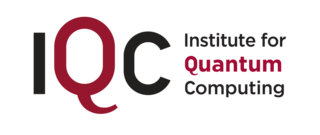 W
WThe Institute for Quantum Computing (IQC) is an affiliate scientific research institute of the University of Waterloo located in Waterloo, Ontario with a multidisciplinary approach to the field of quantum information processing. IQC was founded in 2002 primarily through a donation made by Mike Lazaridis and his wife Ophelia whose substantial donations have continued over the years. The institute is now located in the Mike & Ophelia Lazaridis Quantum-Nano Centre and the Research Advancement Centre at the University of Waterloo.
 W
WLOCC, or local operations and classical communication, is a method in quantum information theory where a local (product) operation is performed on part of the system, and where the result of that operation is "communicated" classically to another part where usually another local operation is performed conditioned on the information received.
 W
WThe Loss–DiVincenzo quantum computer is a scalable semiconductor-based quantum computer proposed by Daniel Loss and David P. DiVincenzo in 1997. The proposal was to use as qubits the intrinsic spin-1/2 degree of freedom of individual electrons confined to quantum dots. This was done in a way that fulfilled DiVincenzo's criteria for a scalable quantum computer, namely:identification of well-defined qubits; reliable state preparation; low decoherence; accurate quantum gate operations and strong quantum measurements.
 W
WThe Mølmer–Sørensen gate is a two qubit gate used in quantum computing. It was proposed by Klaus Mølmer and Anders Sørensen. Their proposal also extends to gates on more than two qubits.
 W
WThe National Quantum Initiative Act is an Act of Congress passed on December 13, 2018 and signed into law on December 21, 2018. The law gives the United States a plan for advancing quantum technology, particularly quantum computing. It passed unanimously by United States Senate and was signed by President Donald Trump.
 W
WA nitrogen-vacancy center is one of numerous point defects in diamond. Its most explored and useful property is photoluminescence, which can be easily detected from an individual N-V center, especially those in the negative charge state (N-V−). Electron spins at N-V centers, localized at atomic scales, can be manipulated at room temperature by applying a magnetic field, electric field, microwave radiation or light, or a combination, resulting in sharp resonances in the intensity and wavelength of the photoluminescence. These resonances can be explained in terms of electron spin related phenomena such as quantum entanglement, spin-orbit interaction and Rabi oscillations, and analysed using advanced quantum optics theory. An individual N-V center can be viewed as a basic unit of a quantum computer, and it has potential applications in novel, more efficient fields of electronics and computational science including quantum cryptography, spintronics, and masers.
 W
WNuclear magnetic resonance quantum computing (NMRQC) is one of the several proposed approaches for constructing a quantum computer, that uses the spin states of nuclei within molecules as qubits. The quantum states are probed through the nuclear magnetic resonances, allowing the system to be implemented as a variation of nuclear magnetic resonance spectroscopy. NMR differs from other implementations of quantum computers in that it uses an ensemble of systems, in this case molecules, rather than a single pure state.
 W
WIn physics and mathematics, the Pauli group on 1 qubit is the 16-element matrix group consisting of the 2 × 2 identity matrix and all of the Pauli matrices,
 W
WThe Pockels effect, or Pockels electro-optic effect, changes or produces birefringence in an optical medium induced by an electric field. In the Pockels effect, also known as the linear electro-optic effect, the birefringence is proportional to the electric field. In the Kerr effect, the refractive index change (birefringence) is proportional to the square of the field. The Pockels effect occurs only in crystals that lack inversion symmetry, such as lithium niobate, and in other noncentrosymmetric media such as electric-field poled polymers or glasses.
 W
WThe Quantum Communications Hub is a quantum technology research hub established as part of the UK National Quantum Technologies Programme. The hub is a consortium of 8 UK universities and 13 industrial partners, which received funding of £24m over a 5-year period.
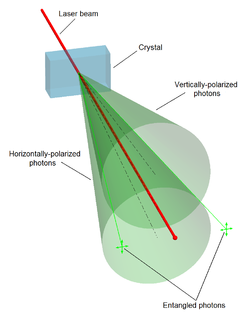 W
WQuantum entanglement is a physical phenomenon that occurs when a pair or group of particles is generated, interact, or share spatial proximity in a way such that the quantum state of each particle of the pair or group cannot be described independently of the state of the others, including when the particles are separated by a large distance. The topic of quantum entanglement is at the heart of the disparity between classical and quantum physics: entanglement is a primary feature of quantum mechanics lacking in classical mechanics.
 W
WIn quantum computing and specifically the quantum circuit model of computation, a quantum logic gate is a basic quantum circuit operating on a small number of qubits. They are the building blocks of quantum circuits, like classical logic gates are for conventional digital circuits.
 W
WQuantum machine learning is the integration of quantum algorithms within machine learning programs. The most common use of the term refers to machine learning algorithms for the analysis of classical data executed on a quantum computer, i.e. quantum-enhanced machine learning. While machine learning algorithms are used to compute immense quantities of data, quantum machine learning utilizes qubits and quantum operations or specialized quantum systems to improve computational speed and data storage done by algorithms in a program. This includes hybrid methods that involve both classical and quantum processing, where computationally difficult subroutines are outsourced to a quantum device. These routines can be more complex in nature and executed faster on a quantum computer. Furthermore, quantum algorithms can be used to analyze quantum states instead of classical data. Beyond quantum computing, the term "quantum machine learning" is also associated with classical machine learning methods applied to data generated from quantum experiments, such as learning the phase transitions of a quantum system or creating new quantum experiments. Quantum machine learning also extends to a branch of research that explores methodological and structural similarities between certain physical systems and learning systems, in particular neural networks. For example, some mathematical and numerical techniques from quantum physics are applicable to classical deep learning and vice versa. Furthermore, researchers investigate more abstract notions of learning theory with respect to quantum information, sometimes referred to as "quantum learning theory".
 W
WQuantum neural networks are computational neural network models which are based on the principles of quantum mechanics. The first ideas on quantum neural computation were published independently in 1995 by Subhash Kak and Ron Chrisley, engaging with the theory of quantum mind, which posits that quantum effects play a role in cognitive function. However, typical research in quantum neural networks involves combining classical artificial neural network models with the advantages of quantum information in order to develop more efficient algorithms. One important motivation for these investigations is the difficulty to train classical neural networks, especially in big data applications. The hope is that features of quantum computing such as quantum parallelism or the effects of interference and entanglement can be used as resources. Since the technological implementation of a quantum computer is still in a premature stage, such quantum neural network models are mostly theoretical proposals that await their full implementation in physical experiments.
 W
WQuantum simulators permit the study of quantum systems that are difficult to study in the laboratory and impossible to model with a supercomputer. In this instance, simulators are special purpose devices designed to provide insight about specific physics problems. Quantum simulators may be contrasted with generally programmable "digital" quantum computers, which would be capable of solving a wider class of quantum problems.
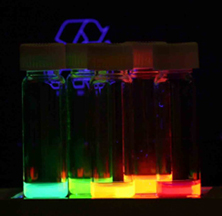 W
WQuantum technology is an emerging field of physics and engineering, which relies on the principles of quantum physics. Quantum computing, quantum sensors, quantum cryptography, quantum simulation, quantum metrology and quantum imaging are all examples of quantum technologies, where properties of quantum mechanics, especially quantum entanglement, quantum superposition and quantum tunnelling, are important.
 W
WRigetti Computing is a Berkeley, California-based developer of quantum integrated circuits used for quantum computers. The company also develops a cloud platform called Forest that enables programmers to write quantum algorithms.
 W
WThe silicon-vacancy center (Si-V) is an optically active defect in diamond that is receiving an increasing amount of interest in the diamond research community. This interest is driven primarily by the coherent optical properties of the Si-V, especially compared to the well-known and extensively-studied nitrogen-vacancy center (N-V).
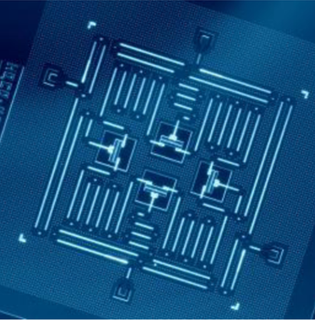 W
WSuperconducting quantum computing is an implementation of a quantum computer in superconducting electronic circuits. Research in superconducting quantum computing is conducted by Google, IBM, IMEC, BBN Technologies, Rigetti, and Intel. as of May 2016, up to nine fully controllable qubits are demonstrated in a 1D array, up to sixteen in a 2D architecture.
 W
WIn quantum information theory, superdense coding is a quantum communication protocol to transmit two classical bits of information from a sender to a receiver, by sending only one qubit from Alice to Bob, under the assumption of Alice and Bob pre-sharing an entangled state. This protocol was first proposed by Bennett and Wiesner in 1992 and experimentally actualized in 1996 by Mattle, Weinfurter, Kwiat and Zeilinger using entangled photon pairs. By performing one of four quantum gate operations on the (entangled) qubit she possesses, Alice can prearrange the measurement Bob makes. After receiving Alice's qubit, operating on the pair and measuring both, Bob has two classical bits of information. If Alice and Bob do not already share entanglement before the protocol begins, then it is impossible to send two classical bits using 1 qubit, as this would violate Holevo's theorem.
 W
WThe Swap test is a procedure in quantum computation that is used to check how much two quantum states differ.
 W
WIn quantum computing, and more specifically in superconducting quantum computing, a transmon is a type of superconducting charge qubit that was designed to have reduced sensitivity to charge noise. The transmon was developed by Robert J. Schoelkopf, Michel Devoret, Steven M. Girvin and their colleagues at Yale University in 2007. Its name is an abbreviation of the term transmission line shunted plasma oscillation qubit; one which consists of a Cooper-pair box "where the two superconductors are also capacitatively shunted in order to decrease the sensitivity to charge noise, while maintaining a sufficient anharmonicity for selective qubit control".
 W
WA trapped ion quantum computer is one proposed approach to a large-scale quantum computer. Ions, or charged atomic particles, can be confined and suspended in free space using electromagnetic fields. Qubits are stored in stable electronic states of each ion, and quantum information can be transferred through the collective quantized motion of the ions in a shared trap. Lasers are applied to induce coupling between the qubit states or coupling between the internal qubit states and the external motional states.
 W
WThe UK National Quantum Technologies Programme (UKNQTP) is a programme set up by the UK government to translate academic work on quantum mechanics, and the effects of quantum superposition and quantum entanglement into new products and services. It brings UK physicists and engineers together with companies and entrepreneurs who have an interest in commercialising the technology.
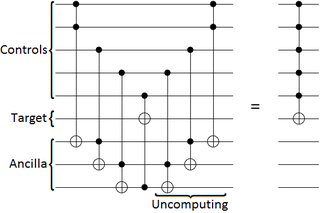 W
WUncomputation is a technique, used in reversible circuits, for cleaning up temporary effects on ancilla bits so they can be re-used.
 W
WAndreas Wallraff is a German physicist who conducts research in quantum information processing and quantum optics. He has taught as a professor at ETH Zürich in Zürich, Switzerland since 2006. He worked as a research scientist with Robert J. Schoelkopf at Yale University from 2002 to 2005, during which time he performed experiments in which the coherent interaction of a single photon with a single quantum electronic circuit was observed for the first time. His current work at ETH Zürich focuses on hybrid quantum systems combining superconducting electronic circuits with semiconductor quantum dots and individual Rydberg atoms as well as quantum error correction with superconducting qubits.